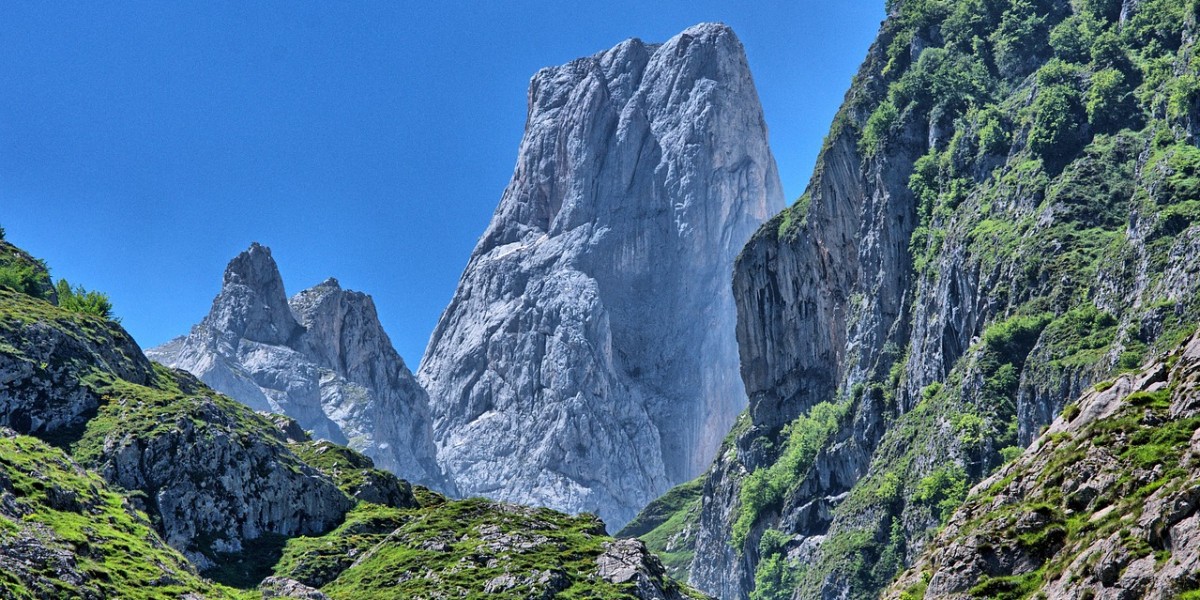
Located in the heart of northern Spain, the Picos de Europa National Park is a mosaic of natural landscapes, living history and cultural richness. The first National Park to be declared in Spain, it is a stunning haven of biodiversity that attracts visitors from all over the world. With a wide range of outdoor activities and sites of historical and natural interest, the Picos de Europa offer an unforgettable experience for all visitors.
What to do in the Picos de Europa National Park?

The Picos de Europa National Park is a true paradise for anyone who wants to experience something unique and explore nature.
- With options ranging from hiking to climbing, cycling and wildlife spotting, every inch of the park is ready to be explored.
- The famous 12-km Ruta del Cares, also known as Garganta Divina, runs through canyons and gorges, connecting the villages of Cain and Poncebos.
- Hiking routes in the Picos de Europa will lead you to discover glacial lakes such as Enol and La Ercina in Covadonga, breathtaking viewpoints and charming villages that seem to have frozen in time.
Towns near the Picos de Europa

All around the Picos de Europa National Park are villages that are true rural gems. Each with its unique charm and traditions, these villages not only offer a window into the traditional life of northern Spain but also serve as perfect starting points for exploring the park's natural beauty.
- Covadonga: Known for its historical and spiritual importance, Covadonga is a must when visiting the Picos de Europa. Here, you can find the Holy Cave of Covadonga, a sanctuary dedicated to the Virgin of Covadonga and the starting point for many hiking routes that will lead you to breathtaking landscapes.
- Cangas de Onis: This village is not only known for its iconic Roman Bridge but also for being the gateway to the National Park. Cangas de Onis is steeped in history and culture, where you can enjoy its vibrant Sunday market and sample the local food.
- Las Arenas: Officially known as Arenas de Cabrales, this village is famous for its Cabrales cheese, one of the best-known and appreciated Asturian cheeses. It is also a strategic point for hiking enthusiasts who wish to venture on routes such as the Cares River trail.
- Bulnes: Accessible only by foot or by cable car, Bulnes is a haven of peace for those looking to unwind. This small village offers spectacular views of the Naranjo de Bulnes and is the ideal place to experience authentic rural life in the Picos de Europa.
- Sotres: Sotres is the highest village in the Picos de Europa and is the starting point for many mountain routes, including the ascent to Picu Urriellu. Its privileged location makes it a natural viewpoint of the park's stunning scenery.
- Potes: At the confluence of four valleys, Potes is the heart of the Liébana region and stands out for its traditional architecture and cobbled streets. Don't miss the chance to taste the local orujo (grape marc) and enjoy this village's welcoming atmosphere.
Best Picos de Europa viewpoints

The Picos de Europa National Park's natural scenery deserves to be seen from the best viewpoints, which offer unbeatable panoramic views. Here are some of the most impressive viewpoints you should not miss.
- The Fito viewpoint's panoramic view stretches from the Picos de Europa to the Cantabrian Sea.
- The Ordiales viewpoint, located in the western massif, is the perfect place to admire the majestic Naranjo de Bulnes.
- The Cable viewpoint, located in Fuente Dé, is accessible by a cable car that takes you up to admire the central massif.
- With spectacular views of the Pineda Valley and the eastern massif, the Piedrasluengas viewpoint is perfect.
- A natural balcony overlooking the La Hermida gorge, the Tombo viewpoint is an unmissable option.
How to get to the Picos de Europa National Park

Planning your visit to the Picos de Europa National Park is the first step to an unforgettable adventure. Depending on your starting point and travel preferences, there are several ways to reach the park:
- Car: Travelling by car is one of the most comfortable and flexible ways to get to the Picos de Europa National Park. The main access routes are the A-8 if you are coming from the coast and the A-66 if your route is from inland. Once in Asturias, Cantabria or León, you can follow the signs to the park.
- Bus: Several companies operate regular bus services connecting the nearby main towns with access to the Picos de Europa National Park. This is ideal if you prefer not to drive or if you're looking for a cheaper option.
- Airplane: If you're travelling from far away, flying may be the best option. The closest airports to the Picos de Europa National Park are Asturias Airport (OVD), Santander Airport (SDR) and Leon Airport (LEN). From there, you can hire a car or take a bus to reach your final destination within the park.
Visiting the Picos de Europa National Park with children

This natural gem has become a perfect place to visit with family and children. The Picos de Europa National Park offers an array of activities that both children and adults can enjoy, creating unforgettable memories in a spectacular natural setting.
For families with children, it is important to plan activities that are safe and suitable for their age. Hiking routes such as Lago Enol are ideal, as they are not too difficult and allow you to enjoy nature without much effort. There are also visitor centres with interactive exhibitions explaining the park's flora and fauna, as well as recreational areas where children can play and explore in a safe environment.